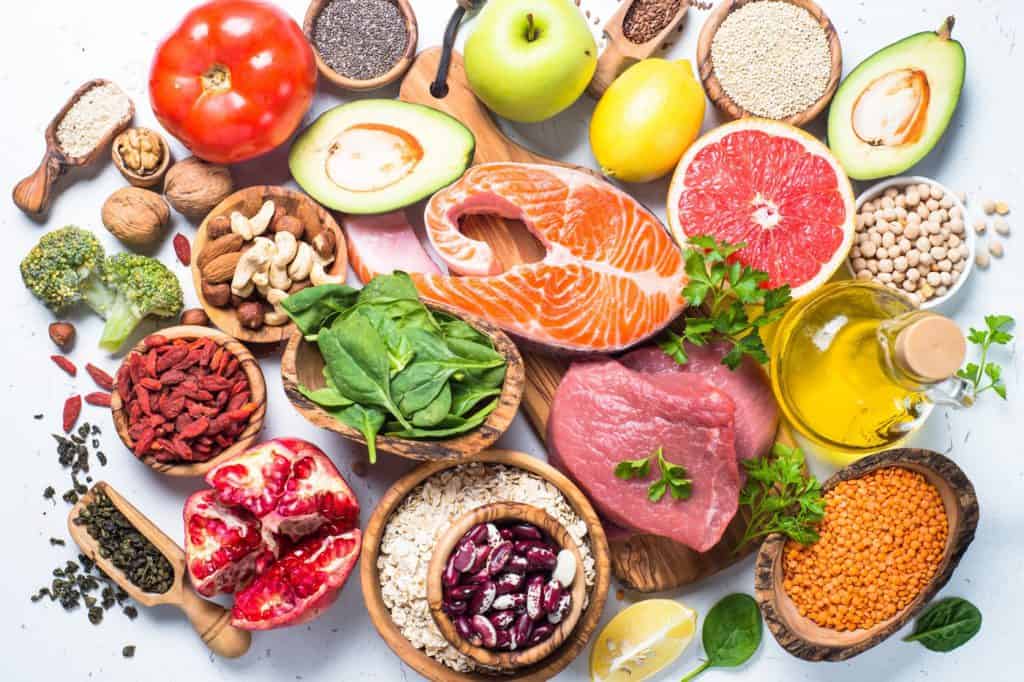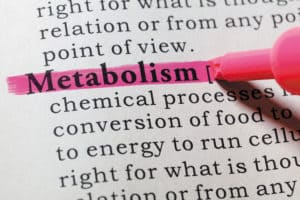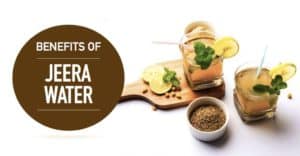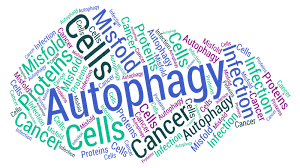Good physical health can be made possible through good eating habits that you can achieve through a balanced diet. This diet helps to promote emotional stability and personality well-being.
Both the quality and quantity of the food are important and should not be compromised.
A balanced diet is very important for physiological, psychological, and social functions. Now let us understand what a balanced diet is.
WHAT IS A BALANCED DIET?
A balanced diet comprises 5 major nutrients.
- Carbohydrate
- Protein
- Fats
- Minerals
- Vitamins
A balanced diet is one that provides your body with the right amount of nutrients it needs to function properly. These nutrients include carbohydrates, proteins, fats, vitamins, minerals, and water. A balanced diet should include a variety of different foods from all food groups, including fruits, vegetables, grains, proteins, and dairy.
Here are some tips for following a balanced diet:
- Eat a variety of different foods: A balanced diet should include a variety of different foods from all food groups. This will help ensure that you are getting a wide range of nutrients and will make your meals more interesting and enjoyable.
- Focus on whole, unprocessed foods: Choose whole, unprocessed foods such as fruits, vegetables, whole grains, and lean proteins whenever possible. These foods are typically more nutritious and have fewer additives and preservatives.
- Limit added sugars and unhealthy fats: Try to limit your intake of added sugars and unhealthy fats such as trans fats and saturated fats. These types of nutrients can contribute to weight gain and increase the risk of chronic diseases such as heart disease and diabetes.
- Eat the right portion sizes: Pay attention to portion sizes and try to eat the appropriate amount of food for your age, gender, and activity level. Eating too much or too little can lead to weight gain or malnutrition.
- Stay hydrated: Make sure to drink plenty of water throughout the day to stay hydrated. Water is essential for maintaining healthy body functions and can also help you feel full and satisfied.
Overall, a balanced diet is one that provides your body with the right mix of nutrients it needs to function properly. By following these tips, you can improve your health and well-being and reduce the risk of chronic diseases.

Composition of a balanced diet:
- 60% – 70% from Carbohydrates ( Prefer complex carbs: whole grains, dehusked pulses low Glycemic index fruits and vegetables)
- 13% – 18 % from Proteins ( Prefer high biological protein: Eggs, milk, chicken, fish, mutton and rest from plant protein: nuts, pulses)
- 20% – 25 % from Fats ( Prefer unsaturated fats: Rice Bran oil, soybean oil, rapeseed oil, sesame oil, mustard oil, groundnut oil, etc.)
Since complex carbohydrates are rich in fiber, they are better for weight loss, maintaining blood sugar levels, and maintaining cholesterol levels.
The bioavailability of High biological protein ( animal protein ) is higher as compared to plant protein. Also, the protein forms our body so incorporating a good source of protein into the diet is essential.
Choosing the right type of fat is crucial since unhealthy fats can cause cardiovascular disease, diabetes, hypertension, and other health problems.
BASIC FOOD GROUPS:
Food can be classified according to its type and nutrients. Each food group is classified by its physiological function.
- Energy-giving foods – Cereal grains ( wheat, corn, oats), Millet (ragi, barley), oils, sugar.
- Bodybuilding foods – Pulses, eggs, fish, chicken, milk, curd, cottage cheese, cheese, nuts, and oilseeds.
- Protective and regulatory foods – Fruits and Vegetables, dairy products, etc.
Now, let us know more about the benefits of a balanced diet.
HEALTH BENEFITS OF A BALANCED DIET
A balanced diet is one that provides your body with the right mix of nutrients it needs to function properly. By following a balanced diet, you can enjoy a number of health benefits, including:
- Weight management: A balanced diet can help you maintain a healthy weight by providing the right mix of nutrients and calories. It can also help you lose weight if you are overweight or obese.
- Improved cardiovascular health: A diet rich in fruits, vegetables, whole grains, and lean proteins can help lower your risk of heart disease by reducing blood pressure and cholesterol levels.
- Stronger bones: A diet rich in calcium and vitamin D can help improve bone health and reduce the risk of osteoporosis, a condition that causes bones to become weak and brittle.
- Increased energy: A balanced diet can help improve energy levels and reduce fatigue by providing the right mix of nutrients and calories.
- Improved mental health: A diet rich in fruits, vegetables, and whole grains has been linked to improved mental health and a lower risk of depression and anxiety.
- Improved immune function: A balanced diet can help improve immune function by providing the body with the nutrients it needs to fight off infections and illnesses.
Overall, following a balanced diet can have numerous health benefits. It is important to choose a variety of different foods from all food groups and to pay attention to portion sizes to ensure that you are getting the right mix of nutrients for your age, gender, and activity level. Consult with a healthcare professional or registered dietitian for personalized nutrition recommendations.
WHAT ARE MACRO-NUTRIENTS?
Macro-nutrients provide calories or energy and form a major part of our diet. They help in carrying out physical activities and maintaining body functions.
The three broad classes of macronutrients are carbohydrates, proteins, and fats.
CARBOHYDRATES:
Carbohydrates contribute to most of the calorie intake of individuals. This is because staple foods like cereals are rich in carbohydrates.
1 gram of Carbohydrates provides 4 kcal.
Functions of carbohydrates-
- The main function is to provide energy. As carbohydrates are broken down into glucose, glucose is then metabolized to release energy.
- The main source of energy for the brain is carbohydrates.
- Muscular functioning requires energy that the body derives majorly from carbohydrates.
- Carbohydrates provide protein-sparing action. In the absence of protein, carbohydrates are used as a source of fuel.
- Also, carbohydrates have dietary fiber in them that helps with digestion and with normal bowel movements.
Sources: All foods like pulses, legumes, fruits, dairy products, vegetables, etc.
PROTEIN:
Every cell of our body is made up primarily of protein. Proteins are crucial for the regulation and essential functions of the body. They have the primary function to repair and maintain bodily tissues.
1 g of Protein gives 4 kcal.
Functions of Protein:
- The main function of protein is the growth, repair, and maintenance of tissues.
- Proteins form skin, hair, nails, teeth, and bones.
- Protein provides immunity as antibodies present in the body are proteins.
- Protein is the ship of the body that transports nutrients.
- Amino acids can also be used to form glucose in the absence of glucose.
Sources: Pulses & legumes, nuts & oilseeds, milk, curd, cottage cheese, cheese, eggs, chicken, fish, and mutton, etc.
FATS:
Fats are present in nearly all foods we consume. They increase the density of food and make the meal palatable. They are part of all cell membranes, helping in the synthesis of hormones and other useful substances.
1 g of fat gives 9 kcal.
Functions of fats –
- The primary function of fats is to provide energy. It is the most concentrated source of energy.
- Essential fatty acids, DHA, MUFA, and PUFA play a vital role in the development of the nervous system, and retina.
- Fats are stored in adipose tissue under our skin which acts as an insulator, decreasing the loss of body heat in cold weather.
- Fats also act as a lubricant for the gastrointestinal tract, allowing easy passage of food.
- Absorption and regulation of vitamin A, vitamin D, vitamin E, and vitamin K is the most important function of fats.
Sources: Ghee, butter, cheese, cream, oil, fish liver oil, egg yolk, salmon, tuna, nuts.
WHAT ARE MICRO-NUTRIENTS?
Micro-nutrients are required in minuscule amounts and enable the body to produce enzymes and hormones. The chances of their deficiency are also high. There are two types of micro-nutrient one is a vitamin and the other is a mineral.
VITAMINS:
Vitamins are essential organic substances needed in small amounts for normal functioning, growth, and maintenance of the body tissues.
The absence of vitamins in the diet leads to deficiency signs and symptoms.
Vitamins are classified into fat-soluble and water-soluble vitamins.
Fat-soluble vitamins-
- These are named fat-soluble because they are fat-soluble and are transported with the help of fats. Vitamin A, Vitamin D. Vitamin E, and Vitamin K are fat-soluble vitamins. A lack of fats in the diet leads to the deficiency of these vitamins.
- Vitamin A plays an important role in vision, reproduction, growth, development, and maintenance of bone and immunity.
Sources: Fish, fish oil, fortified milk, cheese, oil, green leafy vegetables like goosefoot, spinach, methi, and mustard greens.
- Vitamin D is required for bone growth and maintenance of bones, regulation of blood calcium, cell differentiation, parathyroid gland functioning, immunity, and insulin secretion.
Sources: Butter, fish, fish oil, milk, eggs, etc.
- Vitamin E is the only vitamin that acts as an antioxidant and an anti-aging vitamin. It helps in the reduction of the risk of cancer and heart disease. Vitamin E is also important as it has a sparing effect on vitamin A and vitamin C by acting as an antioxidant.
Sources: Corn, cottonseed, soybean, safflower oil, peanuts, wheat germ oil, whole grain, and seeds.
- Vitamin K is important for wound healing by blood clot formation. Essential for bone metabolism and formation.
Sources: Soy and soy products, tomato, green leafy vegetables, and beans.
Water-soluble vitamins –
- These are named water-soluble vitamins as they are soluble in water and do not dissolve in fats. Vitamin B and Vitamin C are the two water-soluble vitamins.
- Vitamin B provides immunity, breaks down food to produce energy, produces healthy hormones, Reduces the risk of cardiovascular diseases, and prevents anemia, and beriberi.
Sources: Bananas, Beans, Beef liver, Bran, Brown rice, Carrots, Cheese, Chicken, Fortified ready-to-eat cereal, Lentils, Milk, Salmon, Sunflower seeds, Wheat germ, Whole-grain flour.
- Vitamin C performs as an antioxidant. Increases iron absorption and provides immunity.
Sources: Tomato, lemon, orange, green chilies, cabbage, and beans.
MINERALS:
Minerals are essential inorganic substances required for the normal functioning of the body. These substances are not synthesized in our body and hence are an essential part of our diet.
- Sodium, Potassium, chloride, magnesium, and calcium are responsible for the water-electrolyte balance, muscle contraction, relaxation, and blood pressure regulation.
- Phosphorus, calcium, zinc, chromium, and magnesium are responsible for cell metabolism, cell growth, and development, and bone health.
- Iron, copper, and calcium play an important role in blood cell formation and clotting.
What Are Calories?
You may think that calories are only significant to dieters but we often hear that people eat lesser calories or burn more calories with exercise to lose weight. But it should be noted that they are important for everyone.
A calorie isn’t actually a thing, it’s just a unit of measurement. It measures the amount of energy in the food and beverages that we consume.
We all require this energy to live and stay healthy. So basically, everything we do relies on the energy that comes in the form of calories.
The food we eat becomes the fuel that runs for our bodies. Healthy food provides calories (energy) and mandatory nutrients to build strong bones and muscles.
Beverages also contain calories. But not all calories are good for you. Carbonated water, for example, is often referred to as “empty calories.” It means that they provide calories but have no other nutritional value.
7-DAY-BALANCED DIET CHART
| DAY/ SLOT |
BREAKFAST |
MID-MORNING |
LUNCH |
EVENING SNACK |
DINNER |
MON |
1 med. bowl Veg. Poha + Pudina Chutney + 1 Apple + 200 ml Low Fat Milk | Lemonade | 2 Chapatis + 1 Small bowl Rice + 1 med. sized bowl Dal + 1 quarter plate Salad + 100 g Curd | Tea/ Coffee + Roasted Peanuts (8-10 ) | Veg. oats + 40 g sauteed Paneer + Suji Kheer ( 1 Small bowl ) |
TUE |
1 Paneer Parantha + Curd + 100 g + 1 Fruit | Buttermilk
( 200 ml ) |
Veg. Pulao
( 1 medium bowl ) + Raita (150 g ) + Salad ( Big plate) |
Tea/ Coffee + Roasted Makhana ( 15 g ) | 1 Chapati + 1 Big Bowl Seasonal Vegetable |
WED |
2 Med sized idlis + 1 Bowl Sambar + 120 g papaya/ Apple | Green tea/ Black coffee | 1 Big Bowl Veg. Khichdi + 1 Med. bowl Dal | Low Fat Milk (200 ml ) + 2 Marie biscuits. | 1 Dal Stuffed Parantha + Mint Chutney |
THURS |
Veg. Vermicelli + Pudina Chutney + Orange juice | 150 g Cucumber | 2 Chapatis + 1 Bowl Palak Paneer + 1 quarter plate salad + Curd ( 120 g ) | Tea / Coffee + 8 Almonds | 1 Large bowl + 1 Med. Bowl Vegetable Daliya + Pickle |
FRI |
1 Med. Bowl Milk Oats + 1 apple + 1-2 walnuts | Coconut water | 2 Chapatis + 1 Med. bowl seasonal vegetable + 1 bowl Dal + Curd ( 90 g ) | Fruit Smoothie ( 100 ml ) | 1 Big Bowl peeled Apple + 120 ml Low Fat Milk. |
SAT |
1 Veg. Uttapam + Coriander Chutney + 1 Fruit ( Any ) | Jaljeera | 1 Large Bowl Vegetable Khichdi + Curd ( 150 g ) + 1 Big Plate Salad | Tea/ Coffee + Roasted Makhana (1 5 g ) | 2 Small Dosas + 2 tbsp Coconut Chutney + 1 Med. Bowl Sambar |
SUN |
Sandwich +Coffee ( Small Glass:200 ml ) | Masala Chach ( 200 ml ) | 1 Med. Bowl Jeera Rice + 1 Med. Bowl Chole masala + 1 bowl Any seasonal vegetable + Raita ( 150 g ) | Tea / Coffee + 2 Biscuits | 2 – 3 Pooris + 1 Med. Bowl Shahi Paneer + 1 Med. Bowl Dal Makhani + Custard ( 1 small bowl) |
Breakdown of Diet Chart
Day 1:
- Breakfast: Overnight oats with sliced banana, almond milk, and a sprinkle of nuts
- Lunch: Grilled chicken salad with mixed greens, cherry tomatoes, and avocado
- Dinner: Whole grain pasta with tomato sauce, steamed vegetables, and a side of grilled salmon
- Snacks: Carrot sticks with hummus and a small piece of dark chocolate
Day 2:
- Breakfast: Scrambled eggs with whole grain toast and a side of berries
- Lunch: Turkey and cheese wrap with lettuce, tomato, and avocado
- Dinner: Grilled vegetable and bean quesadilla with a side of brown rice
- Snacks: Apple slices with peanut butter and a small serving of plain Greek yogurt
Day 3:
- Breakfast: Smoothie made with frozen berries, banana, spinach, and almond milk
- Lunch: Grilled chicken and vegetable skewers with a side of quinoa
- Dinner: Baked salmon with roasted sweet potatoes and steamed broccoli
- Snacks: Edamame and a small serving of unsalted mixed nuts
Day 4:
- Breakfast: Whole grain waffles with a smear of almond butter and a side of sliced banana
- Lunch: Black bean and corn salad with mixed greens and avocado
- Dinner: Grilled vegetable and tofu stir-fry with a side of brown rice
- Snacks: Sliced bell peppers with hummus and a small serving of Greek yogurt with honey
Day 5:
- Breakfast: Oatmeal with sliced almonds, chopped dates, and a splash of milk
- Lunch: Whole grain pita stuffed with hummus, grilled chicken, and vegetables
- Dinner: Baked chicken with roasted root vegetables and a side of quinoa
- Snacks: Apple slices with peanut butter and a small serving of unsalted mixed nuts
Day 6:
- Breakfast: Scrambled eggs with whole grain toast and a side of spinach
- Lunch: Turkey and avocado lettuce wraps with a side of carrot sticks
- Dinner: Grilled salmon with roasted asparagus and a side of sweet potato
- Snacks: Small serving of Greek yogurt with honey and a small piece of dark chocolate
Day 7:
- Breakfast: Smoothie made with frozen mango, banana, spinach, and coconut water
- Lunch: Whole grain pasta with tomato sauce, steamed vegetables, and a side of grilled chicken
- Dinner: Baked tofu with roasted Brussels sprouts and a side of quinoa
- Snacks: Sliced bell peppers with hummus and a small serving of unsalted mixed nuts
This is just a sample balanced diet chart and is not meant to be a one-size-fits-all plan. It is important to consider your own personal needs and preferences when planning your meals and to consult with a healthcare professional or registered dietitian for personalized nutrition recommendations.
COOKING TIPS:
- Choose lean meats and skim dairy products and good fats like nuts, seeds, fish, and olives when other nutrients accompany them.
- Incorporating fats while cooking is good as it helps the body to absorb fat-soluble vitamins. Fats in your foods should be maintained at a minimum.
- Switch to a reduced salt wholemeal or wholegrain bread.
- For sandwiches, limit your use of spreads high in saturated fat like butter and cream cheese; replace with scrapings of spread or alternative nut spreads or low-fat cheese spreads, or avocado.
- Prefer low-fat cheese or salad dressing.
- Add a lot of vegetables to your sandwich to make it healthier.
- Prioritize vegetables over meat in your dishes.
- Use whole wheat flour instead of refined flour when you bake.
GENERAL HEALTHY GUIDELINES:
- Take your lunch to work.
- Drink lots of water.
- It is important to stop when you feel full. This will help you maintain your weight to an extent. This also will help you remain alert and feel your best.
- The most important rule of healthy eating is to eat small frequent meals. Skipping meals leads to slowed metabolic rate. GenThe generating pattern includes 3 major meals and 2 snacks between meals. Also, Never skip breakfast.
- Eat five exchanges of fruit and vegetables every day.
- Keep a supply of healthy snacks on hand. This will stop you from eating unhealthy snacks when hungry.
- It is suggested to remove all visible fat from food before you cook it – take the skin off chicken and trim the white fat off any meat.
- Limited consumption of stimulants such as caffeine, alcohol, and refined sugar.
So, we can conclude that a balanced diet is full of nutrients and is effective in good physical and mental health, thereby preventing health issues. A balanced diet has various healthy meal options and sticking to nutritious, and delicious help in avoiding junk.
Get started with your Weight Loss Journey today and take a step towards a healthy lifestyle! Stay tuned for inspiring Weight Loss Journeys, and Delicious Recipes! Also, don’t forget to follow us on Instagram for the daily dose of Health, and Wellness content!













